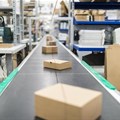Why SA's largest grocery consumer market still isn't shopping online

With specific reference to online grocery shopping, NielsonIQ’s ‘new shopper normal’ study found that online grocery shopping increased from 4% before the Covid-19 pandemic to 12% in September 2020.
Despite the increase in online sales and the greater preference for online shopping, 68% of South African consumers prefer to shop at physical stores. Of those consumers, most cannot and do not shop online owing to high levels of poverty, high data costs and poor infrastructure, digital inequality, and the impracticality for them of the online shopping experience.
Each of these challenges is discussed in this article.
High levels of poverty
In 2020, the United Nations Human Development Index found that 18.9% of the South African population live on R27.66 a day – about R800 a month – and are classified as ‘below the poverty line’ consumers. A further 43.3% of the South African population are classified as ‘low-income earners’ who average around R5,000 a month.
Both consumer groups prioritise their spending on food and groceries, transport, and housing, and less than 2.5% of their monthly spend goes on data and airtime.
High data costs and poor infrastructure
Lower-income earners in South Africa face the added challenge of high data costs. Despite President Ramaphosa’s demand to the Competition Commission that data costs be reduced, these consumers remain at a disadvantage: they cannot afford to buy large data bundles, and so tend to buy smaller quantities.
This has been shown to be more expensive in the long run, which further discourages these consumers from shopping online. In addition, the majority of these consumers live in rural or township areas where the telecommunications infrastructure is poor. In many of these locations, 2G and 3G networks dominate; but their poorer quality internet connections often result in bandwidth and line speed issues, buffering, and poor loading times.
Digital inequality
Daniel explains that an ongoing issue has been digital inequality – the result of high data costs, poor infrastructure, and the lack of digital literacy among low-income earners. These consumers have not been exposed to the internet, or even to computers, until their adult years, unlike their wealthier counterparts, and so are not competent or confident in using the internet.
As a result, most of these consumers are skeptical about using the internet and buying online, which only increases the divide between rich and poor.
Practicality of the online shopping experience
The practical aspects of the online shopping experience also negatively impact lower-income earners’ intention to shop online. These include payment methods and delivery. Most online stores require a credit card or EFT payment; however most of South Africa’s consumers do not own a credit card, let alone a bank account.
In addition, deliveries prove difficult: some consumers do not have a residential address, or are based in rural locations that are beyond the reach of most online grocery store deliveries.
With such issues in mind, it is clear that most of South Africa’s largest consumer market is not shopping online. Grocery retailers should question their investment in online strategies and accommodate the larger segment of the consumer market – that is, lower-income earners and those who prefer to shop at physical grocery stores.
Despite the increase in online shopping, grocery retailers should avoid investing in too many online strategies, thus potentially losing the larger portion of the South African consumer market who prefer shopping at physical stores. Physical grocery store retailers should therefore revise their business models to retain their current low-income customers and to attract more consumers to their stores once the Covid-19 pandemic has ended.













